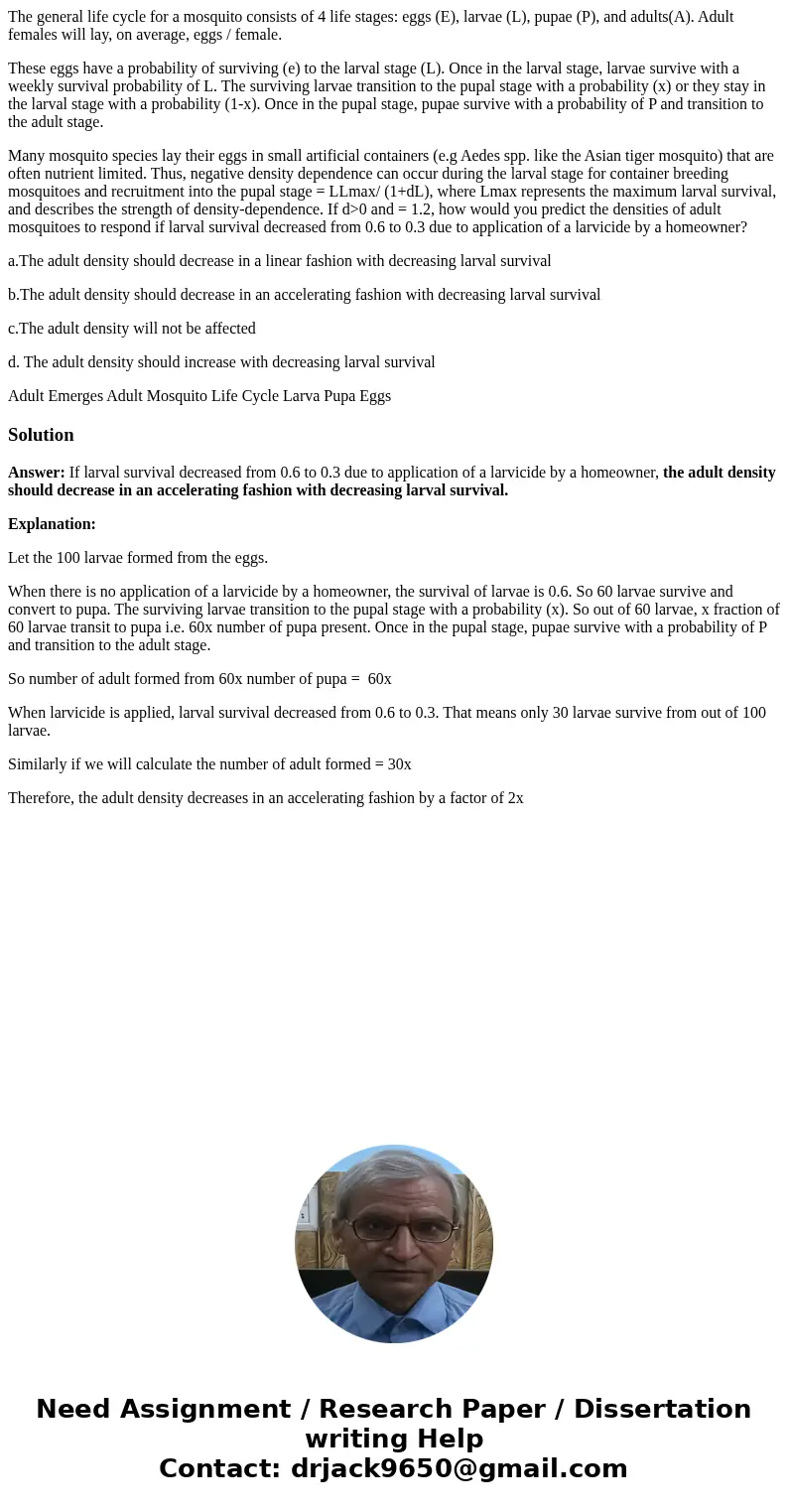The general life cycle for a mosquito consists of 4 life sta
The general life cycle for a mosquito consists of 4 life stages: eggs (E), larvae (L), pupae (P), and adults(A). Adult females will lay, on average, eggs / female.
These eggs have a probability of surviving (e) to the larval stage (L). Once in the larval stage, larvae survive with a weekly survival probability of L. The surviving larvae transition to the pupal stage with a probability (x) or they stay in the larval stage with a probability (1-x). Once in the pupal stage, pupae survive with a probability of P and transition to the adult stage.
Many mosquito species lay their eggs in small artificial containers (e.g Aedes spp. like the Asian tiger mosquito) that are often nutrient limited. Thus, negative density dependence can occur during the larval stage for container breeding mosquitoes and recruitment into the pupal stage = LLmax/ (1+dL), where Lmax represents the maximum larval survival, and describes the strength of density-dependence. If d>0 and = 1.2, how would you predict the densities of adult mosquitoes to respond if larval survival decreased from 0.6 to 0.3 due to application of a larvicide by a homeowner?
a.The adult density should decrease in a linear fashion with decreasing larval survival
b.The adult density should decrease in an accelerating fashion with decreasing larval survival
c.The adult density will not be affected
d. The adult density should increase with decreasing larval survival
Adult Emerges Adult Mosquito Life Cycle Larva Pupa EggsSolution
Answer: If larval survival decreased from 0.6 to 0.3 due to application of a larvicide by a homeowner, the adult density should decrease in an accelerating fashion with decreasing larval survival.
Explanation:
Let the 100 larvae formed from the eggs.
When there is no application of a larvicide by a homeowner, the survival of larvae is 0.6. So 60 larvae survive and convert to pupa. The surviving larvae transition to the pupal stage with a probability (x). So out of 60 larvae, x fraction of 60 larvae transit to pupa i.e. 60x number of pupa present. Once in the pupal stage, pupae survive with a probability of P and transition to the adult stage.
So number of adult formed from 60x number of pupa = 60x
When larvicide is applied, larval survival decreased from 0.6 to 0.3. That means only 30 larvae survive from out of 100 larvae.
Similarly if we will calculate the number of adult formed = 30x
Therefore, the adult density decreases in an accelerating fashion by a factor of 2x

 Homework Sourse
Homework Sourse